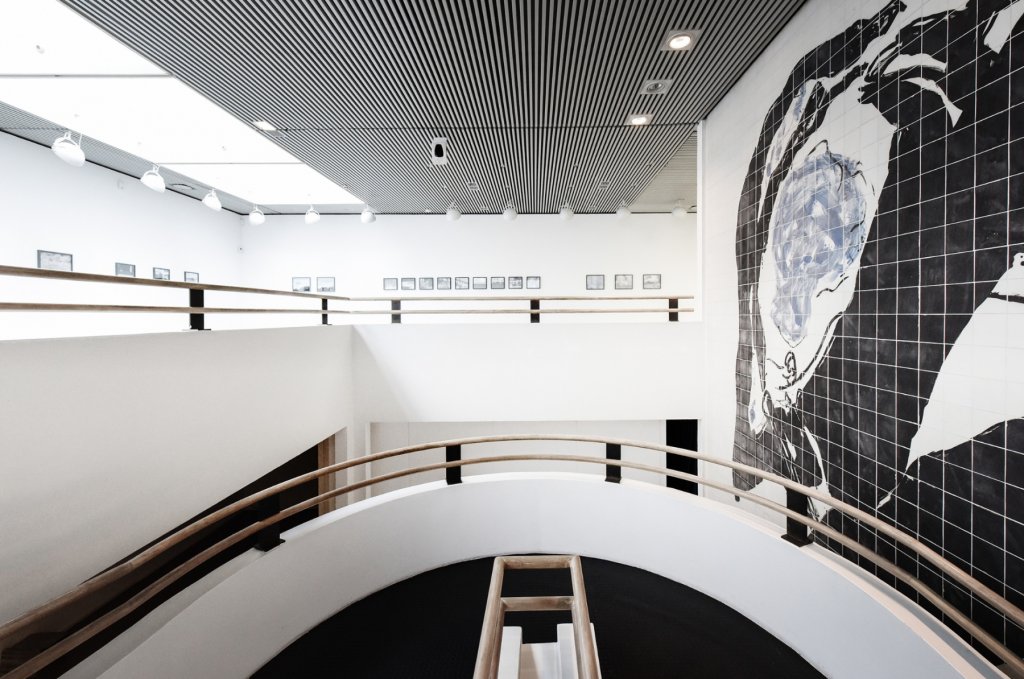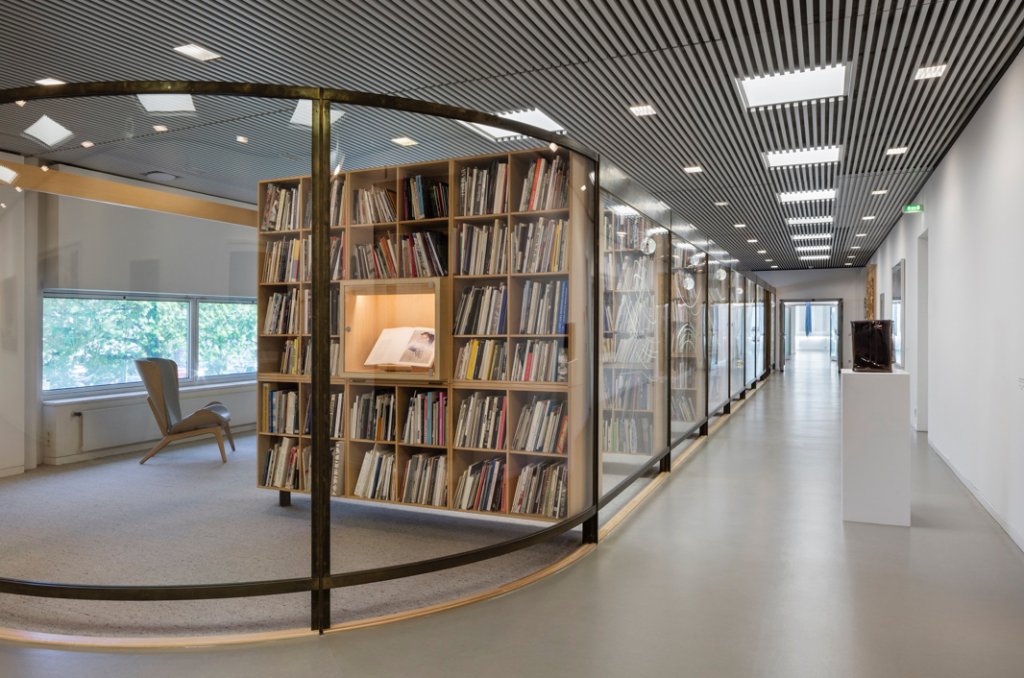Central Europe Ghetto

Petr Spielmann between Brno and Bochum
Initially working as a curator under the guidance of his predecessor Peter Lea, Spielmann actively developed the institution’s concept, which, while regional and truly community-oriented, also had a global reach. His efforts culminated in the founding of the “festival of foreigners”, Kemnade International in 1974, and the opening of a new museum building in 1983, designed by the architects of the famous Danish Louisiana, Vilhelm Wohlert and Jørgen Bo. The seamless space, which does not distinguish between external and internal, public and private, naturally incorporates areas for study and contemplation, a library with a study room (designed by another Central European, Terry Haass), the Forum social hall, and spaces for active entertainment. This space, fundamentally understood as creative, is a legend in itself. The collection that Spielmann and his colleagues assembled is only now receiving critical appraisal.
As was the case with the first edition of the SEFO Triennial (2021), the current edition also includes a historical probe that provides a solid foundation for contemporary progressive creation and serves as an impulse for launching a new research and educational project that the Olomouc Museum of Art will address in the coming years in preparation for the opening of a new exhibition building of the Central European Forum, designed by Jan Šépka. The programme dedicated to research into the regional new media culture, CEAD: New Media Museums, alternates with reflections on institutional policy and collection-building practices. Spielmann’s concept of Central Europe as an integral part of the European cultural tradition, his understanding of the artistic work as the final “monument”, and his effort to develop the museum institution as an open platform and public space provide SEFO with a stimulus to reflect on its own position and social role.
Kunstmuseum Bochum has become a key partner for SEFO, which is reflected, among other things, in the work with the permanent exhibitions of both museums. Within the SEFO 2024 Triennial, Olomouc’s Century of Relativity – another monument about itself – is significantly transformed by incorporating works by Josef and Anni Albers, Joseph Beuys, Terry Haass, Cornelius Kolig, Herbert Kaufmann, Kazimir Malevich, Louise Nevelson, Serge Poliakoff, and Wladyslaw Strzeminski. Furthermore, works by Toyen, Josef Šíma, Jiří Hilmar, and Terry Haass “are returning home”.
This reinstallation is accompanied by an archival exhibition enhanced with a pair of authorial projections. Through it, we enter “the scene of the action”, into Spielmannʼs office, into his proverbial head, and get acquainted with his family, including Oskar and Paul Spielmann, and his lifelong friends and role models, among whom are Jan Amos Comenius, Karel Čapek, and Tomáš Garrigue Masaryk. We become emigrants by choice, our life a puzzle of Perec, each piece representing a small fortune.
Institutions as monuments, personalities as monuments, works as monuments – is it time to reevaluate one or all of them? Can they be anything but inspirational for us? Or alternatively, can we manage without them at all?
PETR SPIELMANN
(October 11, 1932 – November 29, 2020)
The art historian, ethnologist, passionate musicologist, and collector Petr Spielmann was born in Ústí nad Labem, into a culturally German-Jewish family. His father, Paul Spielmann, was a prominent architect, his uncle Oskar was a painter, and his great-uncle Otto was an actor. After studying art history at Masaryk University in Brno, he worked as the head of the picture gallery at the Brno City Museum and from 1959 to 1969 as a curator at the National Gallery in Prague. In 1969, he accepted an invitation to the Städtische Kunstgalerie Bochum, where he initially worked as a lecturer and later as the curator of the newly formed Central European collection. In 1972, he became its director. His tenure was recognised, among other things, with a state decoration from the Federal Republic of Germany. From 1975 to 1997, he was a lecturer at the universities in Dortmund and Bochum. After retiring in 1997, he settled in Brno, where from 2004 to 2006 he served as the dean at the Faculty of Fine Arts at Brno University of Technology
Throughout his tenure in Bochum, Petr Spielmann organised numerous key exhibitions (Otto Gutfreund, Josef Šíma, Mikuláš Medek, Jan Koblasa, Zbyněk Sekal, Endre Nemes, Lev Nussberg and Dviženie, Cubism and Music, Jan Amos Comenius, Totentanz, and others), totalling over three hundred and fifty, most of them accompanied by a catalogue. He was instrumental in founding the international cultural festival for expats, emigrants, and “Gastarbeiter” Kemnade International (active since 1974). He contributed to the creation of the Opus Bonum association and the International Central European Cultural Association. As the dean of Faculty of Fine Arts at Brno University of Technology, he endeavoured to create a never-realised Brno art district on Husova Street. Petr Spielmann was a visionary living a life “in the sign of connections”, a complex personality, an emigrant, and an intellectual. He was a European who systematically opened the ghetto of Central Europe to the world and vice versa.

ACKNOWLEDGMENTS: Inge Spielmann, Hans Gunter Golinski, Ivo Habán, Sepp Hiekisch-Picard, Peter Kropp, Karl Heinz Schneiders, David Voda, Jana Vránová
CURATOR: Barbora Kundračíková
COLLABORATORS: Özlem Arslan, Štěpánka Bieleszová, Ladislav Daněk, Noor Mertens, Gina Renotiere, Julia Zajackowska
ARCHITECTURAL DESIGN: Peter Kropp
INSTALLATION: Filip Šindelář, Daniel Opletal, Vlastimil Sedláček
CONSERVATION: Anna Píšťková, Toby Pospíšilů
GRAPHIC DESIGN: Publicum Design, Petr Šmalec
EDUCATION: David Hrbek, Denisa Tessenyi
PR: Lukáš Horák, Tomáš Kasal
ACKNOWLEDGMENTS: Inge Spielmann, Hans Gunter Golinski, Ivo Habán, Sepp Hiekisch-Picard, Peter Kropp, Karl Heinz Schneiders, David Voda, Jana Vránová
CURATOR: Barbora Kundračíková
COLLABORATORS: Özlem Arslan, Štěpánka Bieleszová, Ladislav Daněk, Noor Mertens, Gina Renotiere, Julia Zajackowska
ARCHITECTURAL DESIGN: Peter Kropp
INSTALLATION: Filip Šindelář, Daniel Opletal, Vlastimil Sedláček
CONSERVATION: Anna Píšťková, Toby Pospíšilů
GRAPHIC DESIGN: Publicum Design, Petr Šmalec
EDUCATION: David Hrbek, Denisa Tessenyi
PR: Lukáš Horák, Tomáš Kasal



